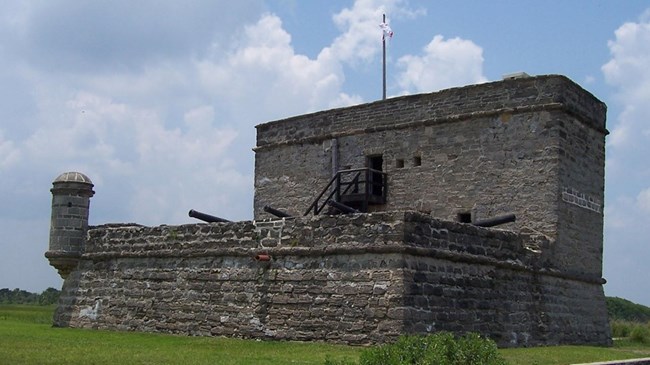
NPS Photo
Overview
Plant life is abundant at Fort Matanzas National Monument. This is primarily because the park receives an average of 49 inches of rain per year, and maintains an average annual temperature of 70 degrees Fahrenheit. Additionally, the park is located on portions of two barrier islands. Barrier islands, when left undeveloped, are comprised of several different plant communities spanning a relatively constricted geographical range. At Fort Matanzas these communities are represented by primary and secondary sand dunes, coastal scrub, maritime hammock, and estuarine salt marsh. This ecological diversity, and the plant-friendly sub-tropical climate, account for why over 250 individual plant species have been identified so far at Fort Matanzas, a park totaling only 300 acres in size.The Fort Matanzas National Monument Vegetation Inventory Project delivers many geospatial and vegetation data products, including an in-depth project report discussing methods and results, which include descriptions to vegetation associations, field keys to vegetation associations, map classification, and map-class descriptions. The suite of products also includes a database of vegetation plots, and accuracy assessment (AA) sites; digital images of field sites; digital aerial imagery; digital maps; a contingency table listing AA results; and a geodatabase of vegetation, field sites (vegetation plots, and AA sites), aerial imagery, project boundary, and metadata.
Products
The products of vegetation mapping projects are stored and managed in the National Park Service's Data Store, a repository for documents and publications relating to park resources. From the highlighted items below, click on the type of information you are looking for.
Last updated: February 6, 2020
